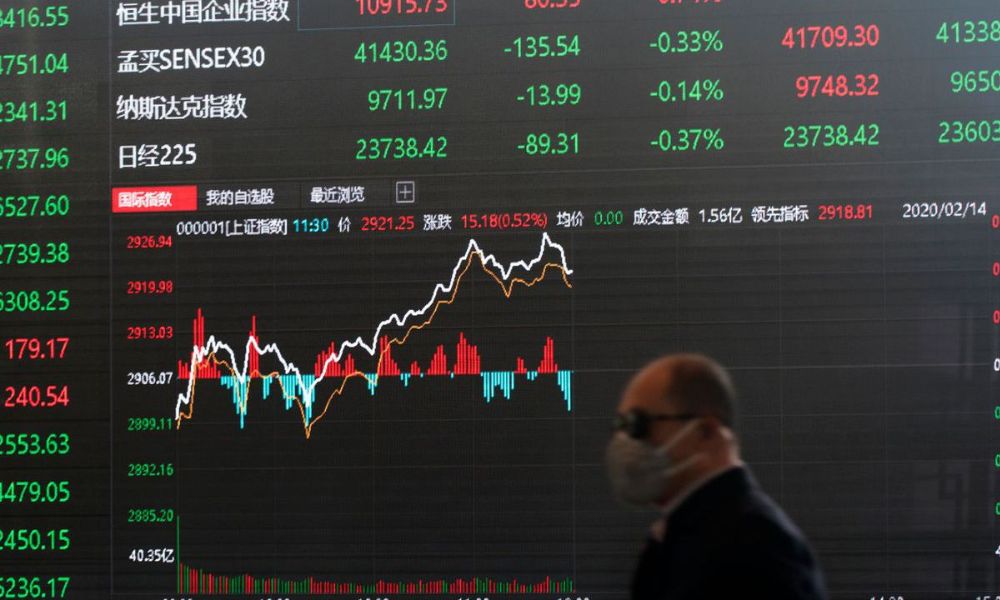
Chinese exports declined precipitously in July by 14.5 percent year-on-year, according to the latest official data released this week. The fall, the steepest since the onset of the COVID-19 pandemic in early 2020, is just one of the economic indices confirming a slump in the world’s second largest economy and largest exporter, as global inflation, high interest rates and slowing economies impact on trade.
The July figure is not an aberration. Chinese exports have declined year-on-year in each of the past three months, dropping by 12.4 percent. Imports have also been falling by 12.4 percent in July and 6.8 percent in June, reflecting both a decline in consumer spending and contracting demand among manufacturers for inputs.
Official inflation figures released yesterday showed that, unlike much of the rest of the world, prices overall are falling in China. The consumer price index fell by 0.3 percent year-on-year in July, on top of no change in June. The producer price index—a measure of the price of goods at the factory gate—dropped even further by 4.4 per cent in July.
Falling prices is a further sign that the anticipated rebound of consumer spending following the government’s lifting of virtually all COVID-19 restrictions at the beginning of the year has failed to occur.
China has been on the brink of deflation, an indicator of economic stagnation, throughout the year. The average consumer price increase in the first seven months was just 0.5 percent—well below the government’s official target of 3 percent.
The economic slowdown is also reflected in data on manufacturing activity—as indicated by the purchasing managers’ index—which has declined for four months in a row to July, according to official statistics.
The index for July was 49.3, marginally up from 49 in June, but still well below the figure of 50 that separates manufacturing contraction from expansion.
The Chinese Communist Party (CCP) regime has set a modest economic growth target of 5 percent. Except for a sharp economic decline in 2020, it would be lowest since 1990. Even the target of 5 percent is now in question.
Growth for the second quarter this year was 6.3 percent when compared to the same period last year when major manufacturing centres such as Shanghai were under COVID-19 lockdown. However, when compared to the first quarter this year—a more accurate measure—growth was just 0.8 percent.
Chinese President Xi Jinping and the CCP leadership are clearly concerned over the state of the economy, not least for what it portends for social unrest. At its meeting last month, the CCP Politburo admitted that the economy had made “tortuous progress” since the lifting of COVID-19 restrictions.
It promised to “concretely optimise private firms’ development environment”—winding back the limited restrictions placed on property developers and other private corporations.
The decline in Chinese exports and economic slowdown is not just the result of low global growth and faltering global trade but of the US economic warfare aimed at undermining the Chinese economy and in particular crippling its hi-tech industries.
US President Biden has not only maintained the punitive tariffs imposed on China by his predecessor Trump, but greatly expanded the scope of bans on Chinese hi-tech corporations and the sale of advanced computer chips and chip-making equipment to China in the name of “national security.”
Biden ramped up the assault on Chinese hi-tech industries yesterday by signing measures into law to ban American corporations and venture capitalists from investing in Chinese companies involved in cutting edge technologies, including developing semiconductors, quantum computers and some artificial intelligence applications.
Far from being narrowly targeted, as Washington claims, the bans are sweeping in scope and are designed to cripple China’s ability to develop and compete in commercial as well as military hi-tech applications. As was the case with previous bans, the US is exerting pressure on its allies in Europe and Asia to follow suit.
US imperialism regards China as the chief threat to its global hegemony and will stop at nothing, including war, to bring Beijing to its knees. The very fact that Washington’s expanding economic war is being waged in the name of “national security” makes clear that the US is rapidly preparing for a military conflict with China—even as it escalates war against Russia.
Washington’s economic bans and deliberate heightening of tensions with China has already impacted on the Chinese economy.
Not only have Chinese exports been affected but there has been a marked slowdown in foreign investment in China—even before the latest measures are implemented.
Net foreign direct investment in the Chinese mainland in the June quarter plummeted to its lowest level in more than two decades—down 87 percent year-on year to just $4.9 billion.
|
Are you a Tax Lawyer in USA? |
Amid the growing uncertainty created by US economic warfare, global corporations are increasingly diversifying their manufacturing bases in what is known as “China plus one”—in other words, retaining some factories in China, particularly for the huge Chinese market, while moving substantial manufacturing elsewhere.
While no doubt many factors are involved, Chinese exports to the US plunged by 23 percent year-on-year in July, while exports into the US from Mexico, Canada, Vietnam and other countries have been sharply rising.
China’s economic slowdown is undoubtedly generating sharp social and political tensions. The CCP’s turn to capitalist restoration from 1978 rested ideologically on the claim that the market would lift the living standards of the population as a whole. In the heyday of Chinese economic expansion, the CCP apparatus considered 8 percent economic growth was the benchmark for high employment and social stability. (Source)